This article was medically reviewed by Janice Litza, MD. Dr. Litza is a board certified Family Medicine Physician in Wisconsin. She is a practicing Physician and taught as a Clinical Professor for 13 years, after receiving her MD from the University of Wisconsin-Madison School of Medicine and Public Health in 1998.
There are 7 references cited in this article, which can be found at the bottom of the page.
This article has been viewed 54,354 times.
There are several reasons why you might need to take a spirometry test, including diagnosing a lung condition, measuring changes in lung function, or monitoring progress or effectiveness of medications. A medical professional will familiarize you with the equipment and procedures at the office, clinic, or hospital where you are taking the test.[1] With some preparation and relaxation on your part, this simple pulmonary function test can be quick (about 45 minutes) and painless.
Steps
Preparing for the Test
-
1Avoid activities which might affect your normal lung function. To ensure accurate results, you need to take the following precautions in the hours leading up to the test[2] [3] :
- Ask your healthcare provider which medications you should avoid on the day of the test.
- Do not smoke within 24 hours of the test.
- Do not drink alcohol within 4 hours of the test.
- Do not exercise strenuously within 30 minutes of the test.
- Wear comfortable clothing that allows you to breathe easily.
- Do not eat a heavy meal within two hours of the test.
-
2Report smoking and medical history to the medical staff. A history of smoking, chronic coughing, wheezing, and shortness of breath are a few of the symptoms that are important for the medical staff to consider as they analyze your spirometry test results.[4]Advertisement
-
3Watch the demonstration by the medical staff. They may show you one or more breathing techniques that you will use during the test. Pay attention to the type of breaths they take and be ready to try them yourself.[5]
Practicing with the Spirometer
-
1Continue breathing normally through your mouth once the soft clip is placed on your nose. This clip closes your nostrils, ensuring that all of the air you expel during the test will exit through your mouth to be measured by the spirometer.[6]
-
2Wrap your lips tightly around the mouthpiece. A tight seal is necessary to prevent air leakage.It is important that all the air you are about to exhale goes into the spirometer for accurate measurements.[7]
-
3Take as deep a breath as possible. Your lungs should feel filled to their maximum.[8]
-
4Exhale hard and fast. Think of this as trying to get all of your air out as quickly as possible. It is important that you exhale quickly for an accurate measurement of the volume you can expel within the first second.[9]
-
5Continue exhaling, until no more air will come out. Your lungs and throat should feel empty. It is important that you discharge all the air for an accurate measurement of how much you exhaled in one entire breath.[10]
-
6Breathe normally between attempts. The test can make you feel lightheaded, so make sure to breathe evenly when appropriate to prevent dizziness.[11]
Taking the Test
-
1Breathe using the same pattern you did during the practice test. Although breathing this way may feel unnatural, this pattern allows the spirometer to measure pulmonary functions such as lung capacity and airflow.
-
2Listen to any notes the medical staff give you on your breathing pattern. You might need to increase your inhalation, the speed of your exhalation, or the duration of your exhalation for the next attempt.
-
3Repeat the breathing pattern at least 2 times, with breaks in between. Multiple measurements give you a chance to correct performance errors, and provide the necessary data for the test results.[12]
Receiving the Results
-
1Wait a few days to hear from your referring doctor. The medical professional who administered the test may not be able to give you the results right away. It depends on the type of medical professional who is administering the test. You may have to wait to speak with your doctor about the results after they’ve been reviewed by a specialist.[13]
-
2Review the results with your doctor. Your height, weight, age, and sex are some of the variables the specialist considered when comparing your test results against the standard measurements. Your doctor should be able to answer questions about how these variables factored into their diagnosis.[14]
-
3Create a treatment plan if you’ve been diagnosed with a condition. Diagnoses may include asthma, chronic obstructive pulmonary disease, cystic fibrosis, pulmonary fibrosis, chronic bronchitis, emphysema, [15] [16] . Test results might also be used to determine eligibility for surgery. Your doctor will work with you to determine the right medications and lifestyle changes necessary to maintain and improve your pulmonary health.
Expert Q&A
-
QuestionCan being sick affect your results?
 Janice Litza, MDDr. Litza is a board certified Family Medicine Physician in Wisconsin. She is a practicing Physician and taught as a Clinical Professor for 13 years, after receiving her MD from the University of Wisconsin-Madison School of Medicine and Public Health in 1998.
Janice Litza, MDDr. Litza is a board certified Family Medicine Physician in Wisconsin. She is a practicing Physician and taught as a Clinical Professor for 13 years, after receiving her MD from the University of Wisconsin-Madison School of Medicine and Public Health in 1998.
Board Certified Family Medicine Physician Yes, you should be in your usual state of health when doing the spirometry testing because it is either establishing a baseline or monitoring for changes.
Yes, you should be in your usual state of health when doing the spirometry testing because it is either establishing a baseline or monitoring for changes.
Warnings
References
- ↑ https://www.lung.org/lung-health-diseases/lung-procedures-and-tests/spirometry
- ↑ https://www.thoracic.org/patients/patient-resources/resources/pulmonary-function-tests.pdf
- ↑ http://www.nhs.uk/Conditions/spirometry/Pages/Introduction.aspx
- ↑ http://www.copdfoundation.org/Take-Action/Get-Tested/Am-I-At-Risk.aspx
- ↑ http://breathe.ersjournals.com/content/8/3/232
- ↑ https://foundation.chestnet.org/lung-health-a-z/spirometry-procedure/?Item=What-to-Expect
- ↑ https://foundation.chestnet.org/lung-health-a-z/spirometry-procedure/?Item=What-to-Expect
- ↑ http://www.nhs.uk/Conditions/spirometry/Pages/Introduction.aspx
- ↑ http://www.copdfoundation.org/Take-Action/Get-Tested/Am-I-At-Risk.aspx
- ↑ https://www.lung.org/lung-health-diseases/lung-procedures-and-tests/spirometry
- ↑ https://www.thoracic.org/patients/patient-resources/resources/pulmonary-function-tests.pdf
- ↑ https://www.thoracic.org/patients/patient-resources/resources/pulmonary-function-tests.pdf
- ↑ http://www.nhs.uk/Conditions/spirometry/Pages/Introduction.aspx
- ↑ https://www.thoracic.org/patients/patient-resources/resources/pulmonary-function-tests.pdf
- ↑ http://www.nhs.uk/Conditions/spirometry/Pages/Introduction.aspx
- ↑ https://my.clevelandclinic.org/health/diagnostics/17833-spirometry#results-and-follow-up
- ↑ http://www.nhs.uk/Conditions/spirometry/Pages/Introduction.aspx
- ↑ https://www.thoracic.org/patients/patient-resources/resources/pulmonary-function-tests.pdf
About This Article
To take a spirometry test, avoid smoking, drinking alcohol, doing strenuous exercise, and eating a heavy meal leading up to it so you can get accurate results. You should also consult your healthcare provider about which medications to avoid before your test. When it’s time to take your spirometry test, you’ll wrap your lips tightly around the mouthpiece of the spirometer, take as deep a breath as you can, and exhale hard and fast until no more air comes out. Don’t worry about memorizing all of these steps. The medical staff will remind you on the day of your test! The way you’re instructed to breathe may feel unnatural, but the staff administering the test can tell you any adjustments you need to make to your breathing pattern. For more information from our Medical co-author, including what kind of symptoms you should report to the medical staff before your test, read on!



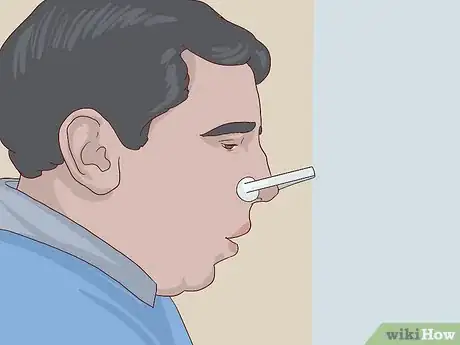
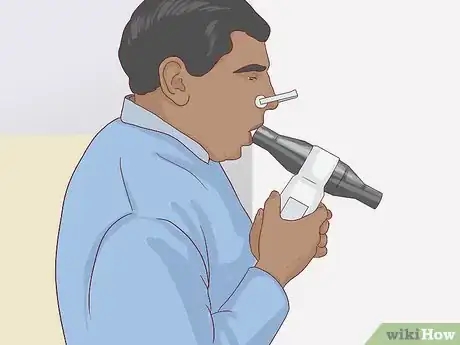
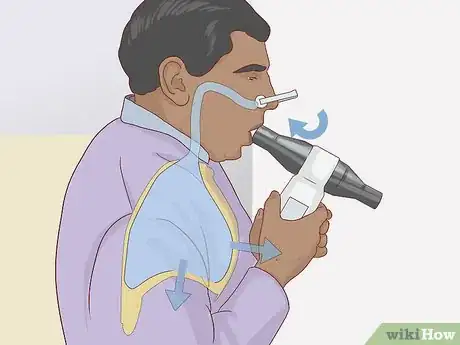
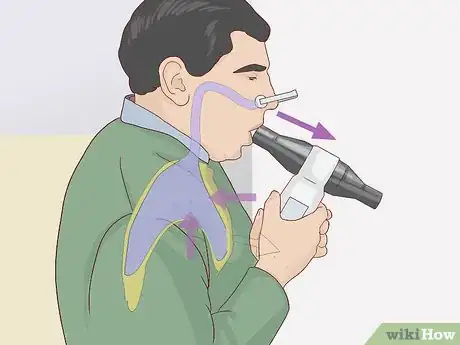
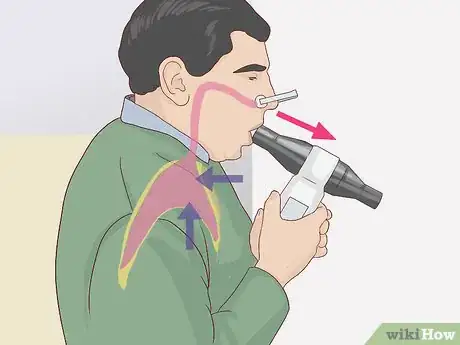
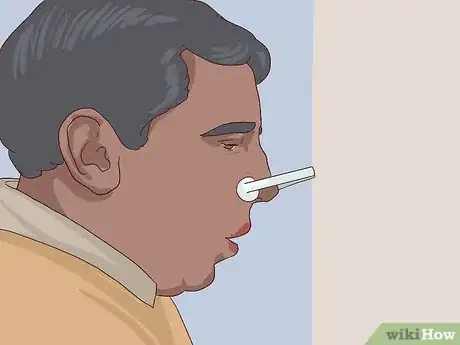








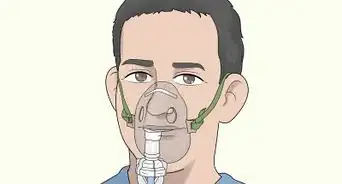



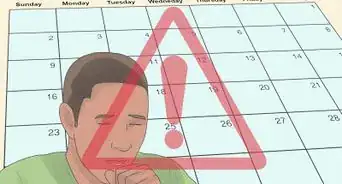
















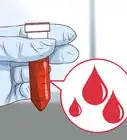
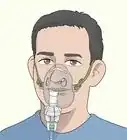




































Medical Disclaimer
The content of this article is not intended to be a substitute for professional medical advice, examination, diagnosis, or treatment. You should always contact your doctor or other qualified healthcare professional before starting, changing, or stopping any kind of health treatment.
Read More...